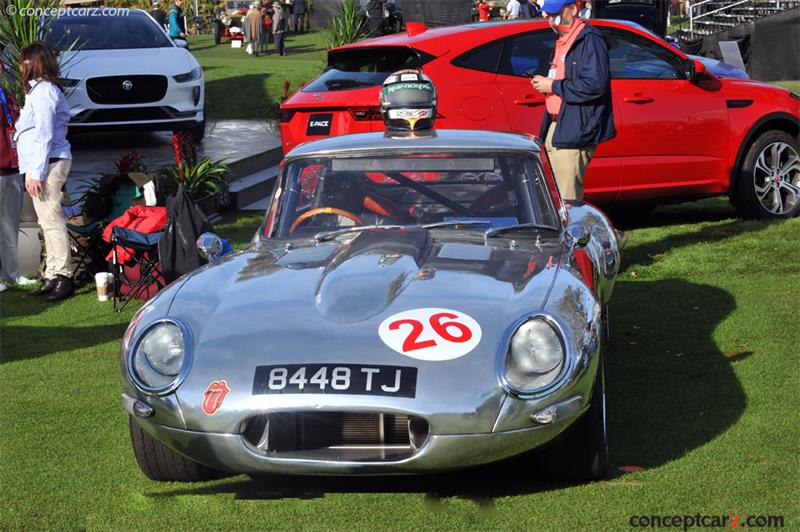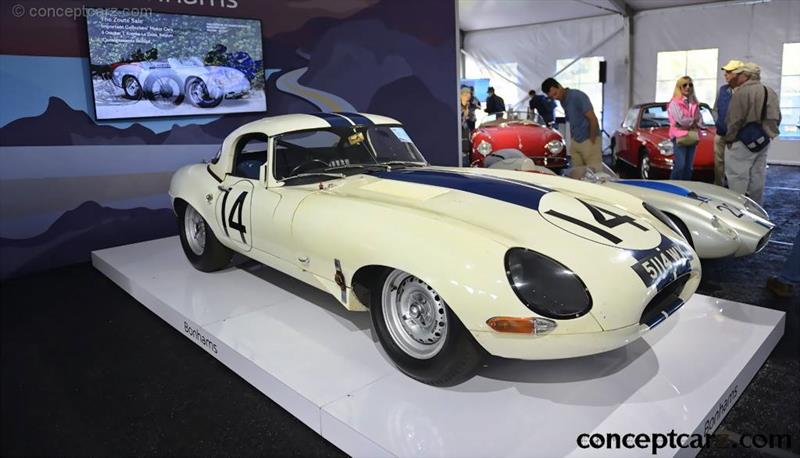As market demand for its road-going products continued to increase during the late 1950s, Jaguar shifted its focus away from competition with a short retirement from the sport. Jaguar had proven to be a worthy adversary, with the Scottish team Ecurie Ecosse claiming its second consecutive victory at the 24 Hours of Le Mans in June of 1957 in a Jaguar D-Type. This gave the sports racer a third straight victory in the endurance contest. The combined efforts of the C-Type and D-Type earned Jaguar five overall victories at the 24 Hours of Le Mans alone during the 1950s. 
Coupe
Chassis #: 86 1227
Engine #: 8L194686
View info and historyContent with its accomplishments, Jaguar embarked on a renewed focus on its road-going models. The decision was further reinforced by changes to racing regulations along with a devastating fire at Jaguar's Browns Lane Works in 1957. The replacement for the Jaguar XK140 was previewed in the E1A development car and the E2A prototype which was raced at the 1960 Le Mans by privateer Briggs Cunningham. Aerodynamicist Malcolm Sayer applied the principles of aerodynamics to the creation of this new model, known as the Jaguar E-Type (XKE) which was officially introduced to the world in March of 1961 at the Geneva Auto Show. Although introduced without factory-backed racing pretensions, its racing pedigree was evident through, including its double overhead cam engine, a fully independent rear suspension, and four-wheel disc brakes (inboard at the rear) designed by Jaguar engineer Bob Knight. Its purposeful design featured a monocoque central structure/body shell, front subframe, and tilting bonnet. 
Coupe
Chassis #: 86 1227
Engine #: 8L194686
View info and historyAlthough retired from racing, Jaguar understood the importance of competition and the publicity it offered. Thus, several early production roadsters were offered to valued customers with close Jaguar relationships. Success was immediate, with Graham Hill driving Tommy Sopwith's 'ECD 400' E-Type to victory at Oulton Park on April 16, 1961. During its next outing on May 21st at Crystal Palace, Roy Salvadori won in John Coombs' 'BUY 1' E-Type. Coombs soon received limited factory support for his E-Type, which was uprated to competition specification, and regularly driven by Graham Hill. Low Drag Coupe
As competition quickly gained ground, Jaguar's experimental and competition departments worked in secret to build chassis EC 1001, a thoroughly uprated E-Type race car. It was named the 'Low Drag Coupe' for its lighter and more aerodynamic body. All of the cockpit glass was perspex, except for the windscreen. Beneath the bonnet was a tuned version of the 3.8-liter engine with a wide-angle cylinder head design.The project was eventually shelved while the development of Coombs' car continued. Hill scored several more podiums during the 1962 season until the arrival of Ferrari's 250 GTO. Lightweight E-Type
The Ferrari 250 GTO was homologated as a 250 GT with different bodywork. In a similar fashion, an all-aluminum, 'Special GT' version of the E-Type was developed. Beginning with a production 3.0-liter engine, it received a lightweight aluminum block and was tuned to produce 300 horsepower, an increase of 35 hp over the production unit. Early examples received a close-ratio version of the four-speed E-Type gearbox, while a few of the later built examples received a ZF five-speed gearbox.
Coupe
Chassis #: 880400Initially, eighteen examples were to be built but ultimately only 12 were constructed. Demonstrating the prowess of the new E-Type Lightweight, Ed Leslie and Frank Morrill finished 1st in Class at its March 1963 debut in the 12 Hours of Sebring, followed by four victories in Britain by Graham Hill in the Coombs car. Three examples wore the Cunningham colors of white with two blue stripes when they arrived at Le Mans. Before the 40th lap was completed, two of the three E-Types had returned, and the lone surviving example finished 9th overall and 2nd inc lass. Although they were the ultimate competition development of the early E-Type and one of the greatest GT-class racing cars of the early 1960s, they were quickly overshadowed by other GT cars. They did find some success in national events, and may have evolved into an international threat had Jaguar continued its development. Many years later, Jaguar Special Operations revisited the project and brought the E-Type Lightweight into the 21st century with the construction of six brand-new examples to original specifications, following one prototype, in 2014. The chassis numbers assigned to this six-car batch (plus one prototype) are the ones that were reserved by Jaguar for the six Lightweights planned but not built during the original production run in 1963.
by Daniel Vaughan | Feb 2006
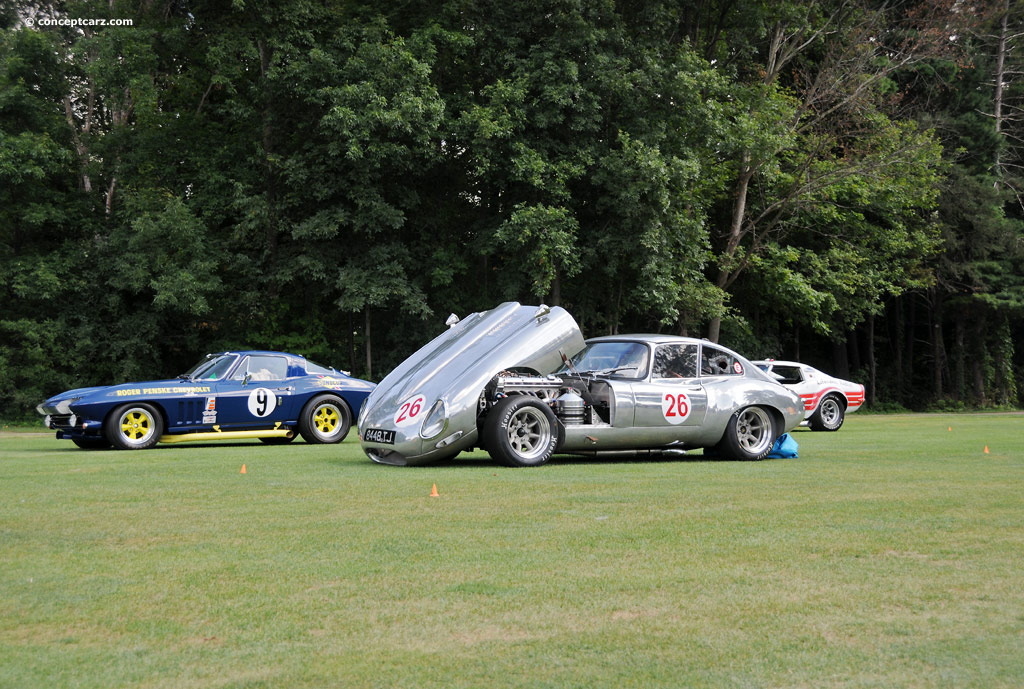
Coupe
Chassis #: 86 1227
Engine #: 8L194686
View info and history
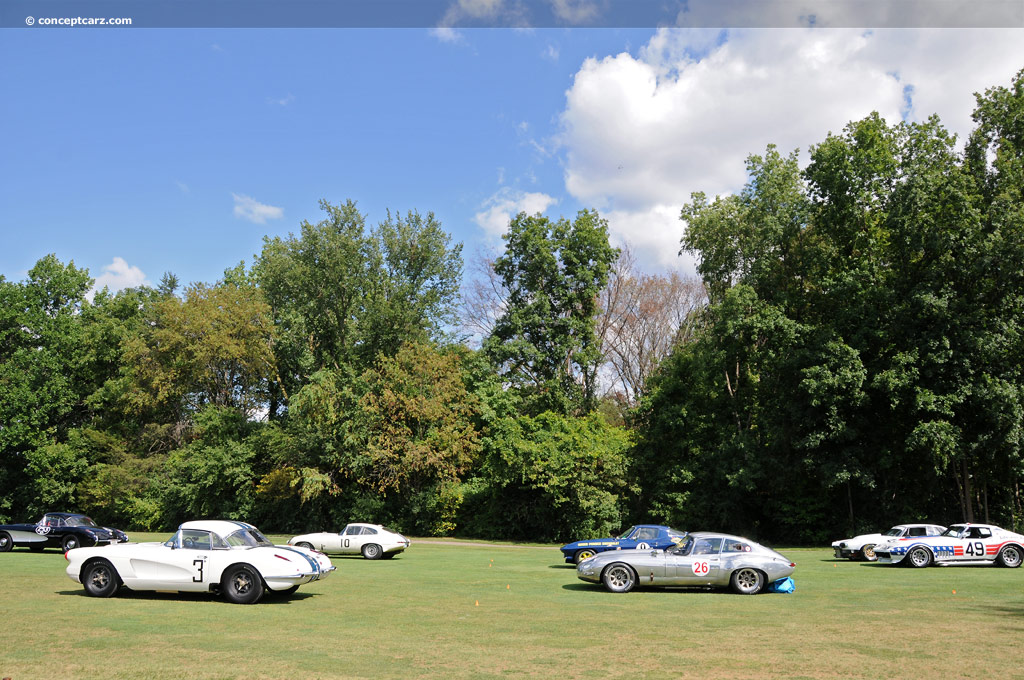
Coupe
Chassis #: 86 1227
Engine #: 8L194686
View info and history
As competition quickly gained ground, Jaguar's experimental and competition departments worked in secret to build chassis EC 1001, a thoroughly uprated E-Type race car. It was named the 'Low Drag Coupe' for its lighter and more aerodynamic body. All of the cockpit glass was perspex, except for the windscreen. Beneath the bonnet was a tuned version of the 3.8-liter engine with a wide-angle cylinder head design.The project was eventually shelved while the development of Coombs' car continued. Hill scored several more podiums during the 1962 season until the arrival of Ferrari's 250 GTO. Lightweight E-Type
The Ferrari 250 GTO was homologated as a 250 GT with different bodywork. In a similar fashion, an all-aluminum, 'Special GT' version of the E-Type was developed. Beginning with a production 3.0-liter engine, it received a lightweight aluminum block and was tuned to produce 300 horsepower, an increase of 35 hp over the production unit. Early examples received a close-ratio version of the four-speed E-Type gearbox, while a few of the later built examples received a ZF five-speed gearbox.
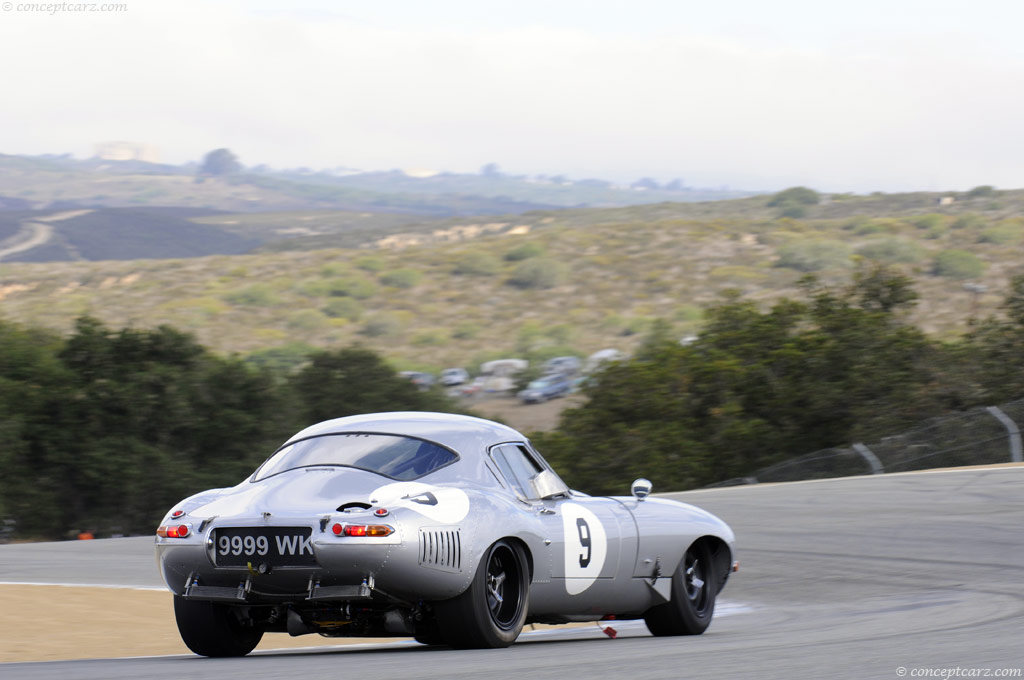
Coupe
Chassis #: 880400
by Daniel Vaughan | Feb 2006
Related Reading : Jaguar E-Series History
The Jaguar E type, also known as the XK-E, brought style and performance together to create a mass-produced supercar. The road-going sports car was conceived in 1956 as a replacement for the D-type. In March of 1961, the E-Type was officially introduced to the world at the Geneva, Switzerland Motor show. Its design was created by an aerodynamic engineer named Malcolm Sayer. The front-engine,....
Continue Reading >>
Continue Reading >>
Related Reading : Jaguar Lightweight E-type History
The Jaguar E-Type was launched at the 1961 Geneva Motorshow and it was not long before the road-going car made its way to racing tracks. The vehicles lineage was rooted in sports car racing, with its chassis and engine sourced from the three-time Le Mans-winning Jaguar D-Type. In production trim, the E-Type was incredibly fast and nimble, but there was room for improvement. For starters, it steel....
Continue Reading >>
Continue Reading >>
Similar Automakers
1963 Jaguar XKE Lightweight Vehicle Profiles
Recent Vehicle Additions
Performance and Specification Comparison
Lightweight E-type Specification Comparison by Year
Year
Production
Wheelbase
Engine
Prices
Related Automotive News

LEGENDARY FACTORY LIGHTWEIGHT COMPETITION E-TYPE HEADS TO SCOTTSDALE
FIRST TIME IN MORE THAN A DECADE THIS MODEL HAS APPEARED AT AUCTION
Exceedingly well preserved and documented championship-winning example and one of the most original of the 12 built
Bonhams is very pleased to welcome yet another excep...
Bruce McLaren's 'Buried Treasure' Unearthed After 57 Years
Legendary Jolly Green Giant The Very First McLaren Badged Car, Revealed at Bonhams
One of motor racings most legendary classic sports-racing cars, Bruce McLarens 1964 Cooper-Zerex-Oldsmobile Jolly Green Giant – which became something of...

London Concours 2021 celebrates the 60th anniversary of the Jaguar E-type
The London Concours has announced the latest class at this years event which celebrates the iconic Jaguar E-type
The display features nine of the finest Jaguar E-types in existence
On display, E-types ranging from first to last including 77RW t...
John Fisher: 1959 Formula One Season
Throughout the history of Formula One there have been many names that have come and gone, many of which barely make a mark on the sport other than in the history books. However, in 1959, Bruce Halford would help John Fisher to make an impressive mark,...

High Efficiency Motors: 1958 Formula One Season
C.T. Tommy Atkins would start out his career as a motorcycle racer riding Douglas motorcycles in the early 1930s. By the time the mid-to-late 50s rolled around, Atkins had moved on from racing, but not very far. Perhaps feeling a need to support up-and-coming...

PETER SACHS RECEIVES RRDC'S 2013 BOB AKIN AWARD
DAYTONA BEACH, Fla. (Jan. 24, 2014) - Peter Sachs, a retired successful SCCA, IMSA, USRRC and vintage racer, received the 2013 Bob Akin Award from the Road Racing Drivers Club at a dinner prior to the running of the Rolex 24 At Daytona, the season...






















